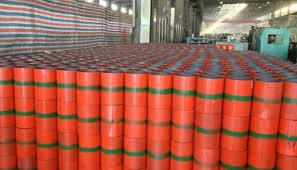- Afrikaans
- Albanian
- Amharic
- Arabic
- Armenian
- Azerbaijani
- Basque
- Belarusian
- Bengali
- Bosnian
- Bulgarian
- Catalan
- Cebuano
- Corsican
- Croatian
- Czech
- Danish
- Dutch
- English
- Esperanto
- Estonian
- Finnish
- French
- Frisian
- Galician
- Georgian
- German
- Greek
- Gujarati
- Haitian Creole
- hausa
- hawaiian
- Hebrew
- Hindi
- Miao
- Hungarian
- Icelandic
- igbo
- Indonesian
- irish
- Italian
- Japanese
- Javanese
- Kannada
- kazakh
- Khmer
- Rwandese
- Korean
- Kurdish
- Kyrgyz
- Lao
- Latin
- Latvian
- Lithuanian
- Luxembourgish
- Macedonian
- Malgashi
- Malay
- Malayalam
- Maltese
- Maori
- Marathi
- Mongolian
- Myanmar
- Nepali
- Norwegian
- Norwegian
- Occitan
- Pashto
- Persian
- Polish
- Portuguese
- Punjabi
- Romanian
- Russian
- Samoan
- Scottish Gaelic
- Serbian
- Sesotho
- Shona
- Sindhi
- Sinhala
- Slovak
- Slovenian
- Somali
- Spanish
- Sundanese
- Swahili
- Swedish
- Tagalog
- Tajik
- Tamil
- Tatar
- Telugu
- Thai
- Turkish
- Turkmen
- Ukrainian
- Urdu
- Uighur
- Uzbek
- Vietnamese
- Welsh
- Bantu
- Yiddish
- Yoruba
- Zulu
Durable Stainless Steel Hose Connectors for Reliable Fluid Transfer Solutions
The Essential Guide to Stainless Steel Hose Couplings
Stainless steel hose couplings are vital components in various applications, serving critical roles across industries such as manufacturing, automotive, agriculture, and marine. These couplings provide the connection necessary to ensure the efficient flow of liquids and gases, all while maintaining durability and resistance to corrosion. This article delves into the significance, types, benefits, and applications of stainless steel hose couplings.
Understanding Stainless Steel Hose Couplings
A hose coupling is designed to connect two lengths of hose, allowing for a quick and easy interchange of hoses or attachments. Stainless steel is often the material of choice due to its exceptional strength, resilience, and resistance to corrosion and rust. The stainless steel composition makes these couplings ideal for high-pressure applications and environments where exposure to moisture, chemicals, or extreme temperatures is a concern.
Types of Stainless Steel Hose Couplings
There are several types of stainless steel hose couplings, each suited for specific applications
1. Cam Lock Couplings These are designed for easy and quick connections without the need for tools. The cam arms lock down on the male adapter, providing a secure bond, making them a popular choice in applications requiring frequent disconnection and reconnection.
2. Threaded Couplings These couplings are available in various thread sizes and configurations, providing a secure and leak-proof connection. They are commonly used in industries where hoses must be connected to fixed piping.
3. Hygienic (Sanitary) Couplings In food and medical applications, hygienic couplings ensure the integrity and safety of materials being transported. These couplings are designed to be easily cleaned and are free from crevices that could harbor bacteria.
4. Quick Connect/Disconnect Couplings Ideal for applications that require rapid hose swaps, these couplings allow users to connect or disconnect hoses quickly, enhancing operational efficiency.
5. Flanged Couplings These couplings use flanges and bolts to create a strong connection between hoses and fittings, typically employed in heavy-duty applications.
stainless steel hose couplings

Benefits of Using Stainless Steel Hose Couplings
1. Corrosion Resistance One of the primary advantages of stainless steel hose couplings is their natural resistance to corrosion. This property extends the lifespan of the coupling, ensuring its performance even in harsh environments.
2. Temperature Tolerance Stainless steel can withstand a wide range of temperatures, making these couplings suitable for diverse applications, from freezing conditions to high-heat environments.
3. Durability and Strength The robust nature of stainless steel means that its couplings can handle high pressures without risking failure or leaks.
4. Low Maintenance Unlike couplings made from other materials, stainless steel requires minimal upkeep, reducing downtime and associated maintenance costs.
5. Recyclability Stainless steel is a highly recyclable material, making these couplings an environmentally friendly choice. When they reach the end of their life cycle, they can be repurposed without losing their structural integrity.
Applications
Stainless steel hose couplings are used in a wide array of applications
- Manufacturing In factories, these couplings are essential for transferring fluids, materials, and steam through various processes. - Automotive In the automotive industry, they are often employed for fuel lines, hydraulic systems, and coolant systems due to their durability and dependability. - Agriculture Stainless steel hose couplings facilitate the efficient irrigation of crops as well as the transportation of various agrochemicals. - Marine In the marine sector, these couplings are crucial for reliable connections in fuel, water, and exhaust systems, where exposure to saltwater can accelerate corrosion. - Food and Beverage Sanitary stainless steel couplings are indispensable in the food and beverage industry, ensuring that the transfer of ingredients occurs safely and without contamination.
Conclusion
Stainless steel hose couplings play a crucial role in modern industrial applications, providing robust, reliable, and corrosion-resistant connections for various fluids and gases. With multiple types available, they can cater to the specific needs of different industries, ensuring operational efficiency and safety. Their durable nature and low maintenance requirements make them an excellent investment for any business that relies on effective fluid transfer systems. Whether in a factory, farm, or aboard a vessel, stainless steel hose couplings are essential components that help keep industry moving forward.
-
Tubing Pup Joints: Essential Components for Oil and Gas OperationsNewsJul.10,2025
-
Pup Joints: Essential Components for Reliable Drilling OperationsNewsJul.10,2025
-
Pipe Couplings: Connecting Your World EfficientlyNewsJul.10,2025
-
Mastering Oilfield Operations with Quality Tubing and CasingNewsJul.10,2025
-
High-Quality Casing Couplings for Every NeedNewsJul.10,2025
-
Boost Your Drilling Efficiency with Premium Crossover Tools & Seating NipplesNewsJul.10,2025







